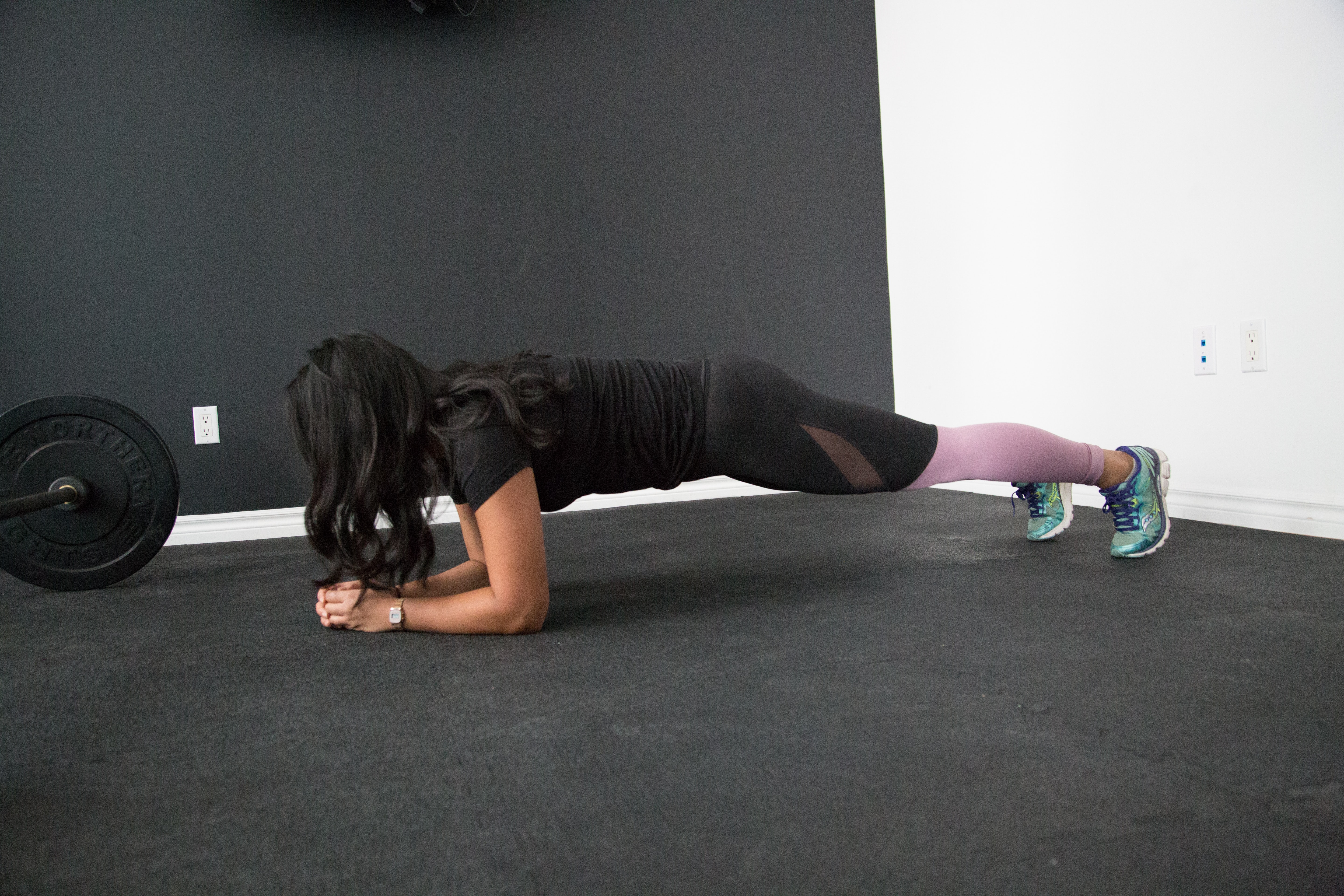Does a morning like the following sound familiar to you?
It’s early when you hear the familiar buzzing of your alarm clock—and there it is again, back pain. From the moment your day starts, lower back pain is there; it hurts to play with your kids, sit at your desk, even tie your shoes, and you’re feeling frustrated and hopeless.
If this resonates with you, you’re not alone.
Back pain sucks. It’s an obstacle in the way of living our life. Thus, it’s natural to want a solution to this back pain; we don’t want to keep suffering. We want answers to this pain problem. Unfortunately, this desire for answers—a way out of pain—can lead us to poor solutions and beliefs.
One such belief is that a “weak core” causes back pain.
Back pain being caused by a weak core is a common narrative which has been spread for years. It’s been passed along by fitness professionals, the media, and even some doctors. It’s well-intentioned—someone is in pain and the person giving them that information wants to help. The problem lies not with the intention, but with the advice itself. The belief is untrue.
Before we discuss specifics behind a “weak core” and back pain, we must start by defining it. If we can’t define what a weak core is, then it will be impossible to discuss this belief; this is where our problem starts. What is a weak core? Do you know? Because I sure don’t.

I could attempt to give a definition for this: a weak core is being unable to hold a plank for 30 seconds. Is that good? Eh. Maybe.
How about this: a weak core is being unable to do 5 Dead Bugs per side with our low back staying flush with the floor. That better? Oh! How about we measure it using an EMG? Probably not practical for the everyday person.
As you can see, there is no easily agreed upon definition for what a weak core is. Or what a strong core is for that matter. There are things we’d like people to be able to do, but qualifying someone’s core as “weak” makes things murky. Pain isn’t as simple as “x” causes “y.” There’s no specific point where someone’s core becomes strong enough that back pain ceases; it doesn’t work that way.
But don’t take my word for it, let’s look at some evidence.
What Does The Research Tell Us?
The British Journal Of Sports Medicine had this to say (1):
“Weak ‘core’ muscles do not cause back pain, in fact people with back pain often tense their ‘core’ muscles as a protective response…Being strong is important when you need the muscles to switch on, but being tense all the time isn’t helpful. Learning to relax the ‘core’ muscles during everyday tasks can be helpful.”
Core strength does matter—when performing exercises in the gym, which I’ll dive into soon—but it’s not a cause of someone’s back pain. People in back pain often have higher levels of tension in their core. This could be thought of as protective tension; we brace our midsection fearing if we don’t, we might move in a way that causes our pain to increase. Doing more core exercises is feeding tension through a system that is already generating high levels of tension.
What could be beneficial, is being able to relax those muscles. We don’t need much core stability to, say, pick up a pencil; or to play with our dog. We need the ability to relax those muscles during low load activities and while at rest.

Before we continue, I’m going to hit the pause button for a moment. I stated core strength doesn’t cause lower back pain, and maybe you’re thinking,
“Well, that makes sense so far, but I did core exercises in the past and they helped alleviate my pain.”
If doing those exercises helped, then that’s great. I’m happy to hear that, but it’s probably not for the reasons you think.
While a number of studies have shown that core stability training can improve lower back pain—for example, a meta-analysis from 2012 showed core stability exercises helped in the short term(4)—there have been other studies showing a similar benefit between general exercise and core stability training (1, 2).
Lederman, in his 2007 article, had this to say about core stability training (2):
“Furthermore, CS (Core Stability) training may shift the therapeutic focus away from the real issues that maintain the patient in their chronic state. It offers a simplistic solution to a condition that may have complex biopsychosocial factors.”
Based on the state of current literature, it seems that general exercise is comparatively beneficial to core stability training in general; and, since we are more likely to do things we want to do, it makes sense to focus on forms of exercise we enjoy doing. If that involves some core stability training, then that’s great. If it involves another type of exercise you enjoy, then that’s great too.

Remember: pain isn’t simply “x” causes “y.” Thus, having a “weak core” doesn’t equate to having back pain; it’s not that simple.
Now, before anyone freaks out and starts coming at me with pitchforks and torches—thinking I’m saying core exercises are worthless—I’m not saying that. They’re valuable, just in other ways than getting someone’s core stronger to “fix” back pain.
Core Strength DOES Matter
So, why does core strength and stability matter?
First, maintaining position while lifting a heavy load matters for safety. Nearly every movement we teach at BSP—deadlifts, squats, push-ups, inverted rows, kettlebell swings, etc.—involve maintaining a tall and tight position. Having core strength can assist us in being able to maintain a rigid position while moving a heavy load.
Second, having core strength and stability allows us to transfer force from our lower body to our upper body. Let me explain by using a Water Pail MB Throw as an example. When we perform the exercise, it starts from the ground up. We transfer force from our foot to our hip, which is then transferred through our core to our arms to finish the throw.
Lastly, some core exercises help us gain better proprioception (awareness of our body in space). Let’s look at Dead Bugs (no, not actual dead bugs, but the exercise) to explain this more. When we perform Dead Bugs, we learn to move our limbs without a change in torso, or core, position. This teaches us to maintain a tall and tight position while our limbs move—like they do in nearly every exercise.
Let’s Recap:
Low back pain is not caused by a weak core, but that doesn’t mean we shouldn’t train our core. Core training can be valuable for teaching us awareness of our body in space; it can help us maintain position under heavily loaded exercises; and, like with other general exercise, it has the potential to help our back pain.
Now, if you’re suffering from low back pain, then I’d recommend seeing a physical therapist to get solutions that will help you. Pain is complex, so I can’t give specific solutions here, but a good physical therapist can.
Remember: your back isn’t weak and frail—it won’t hurt because your core is weak. Your back is strong and resilient. With most cases of back pain, movement can help. Find movements that you enjoy doing—because you’ll be more likely to do them—and see how you feel after doing them. If they help, then great. And, if you go to our gym and you are experiencing back pain, let us coaches know and we’ll be able to modify the workout to keep you moving towards your goals.
Sources:
- Koumantakis, George A., Paul J. Watson, and Jacqueline A. Oldham. “Supplementation of general endurance exercise with stabilisation training versus general exercise only: physiological and functional outcomes of a randomised controlled trial of patients with recurrent low back pain.” Clinical biomechanics5 (2005): 474-482.
- Lederman, Eyal. “The myth of core stability.” Journal of bodywork and movement therapies1 (2010): 84-98.
- O’Sullivan PB, Caneiro J, O’Sullivan K, et al
Back to basics: 10 facts every person should know about back pain
British Journal of Sports Medicine Published Online First: 31 December 2019. doi: 10.1136/bjsports-2019-101611 - Wang, Xue-Qiang et al. “A meta-analysis of core stability exercise versus general exercise for chronic low back pain.” PloS one 7,12 (2012): e52082. doi:10.1371/journal.pone.0052082
More Suggested Reading:
Acceptance of What We Can’t Change
Is the Deadlift Bad For Your Back?
Tightness: Is Stretching the Answer?
